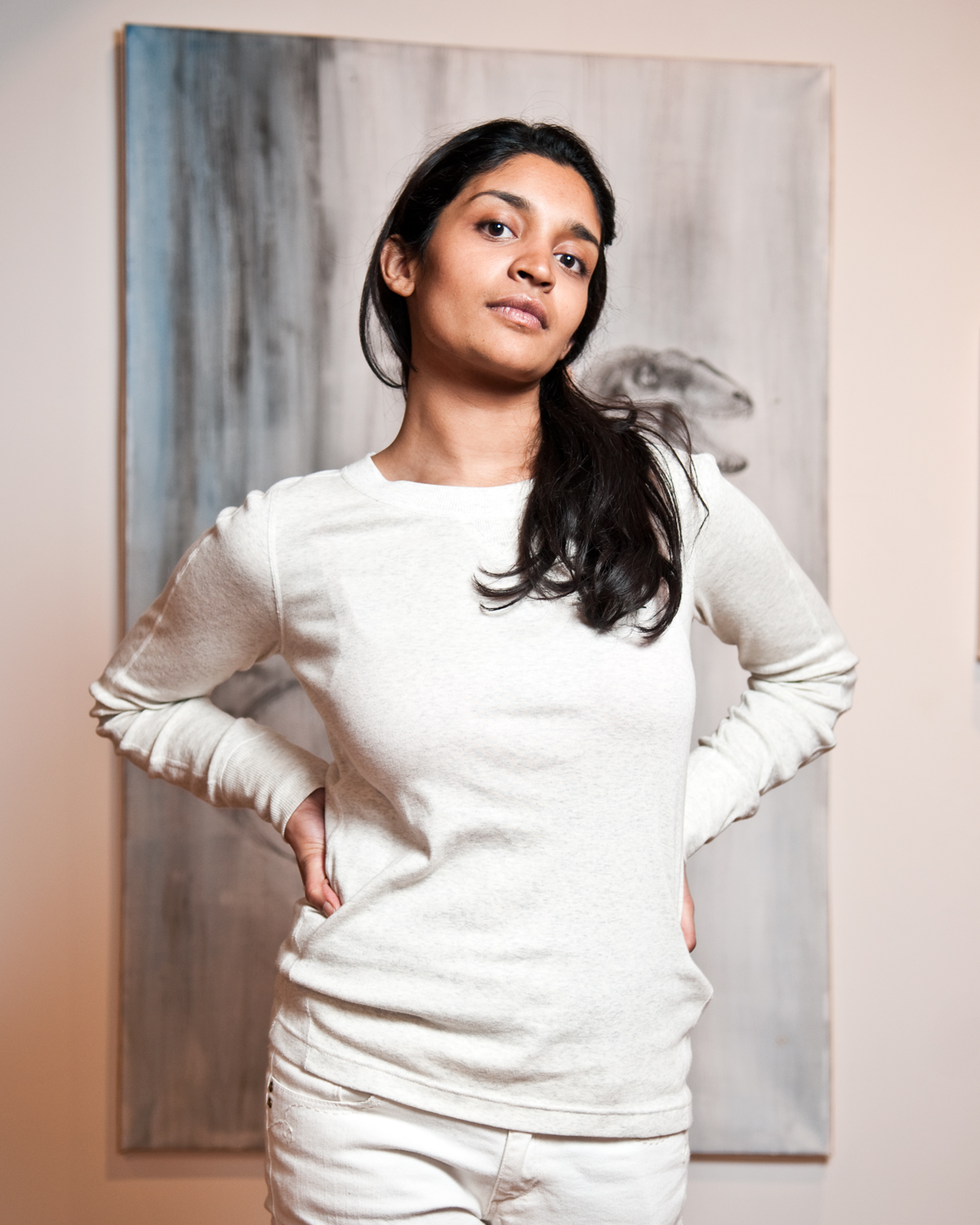
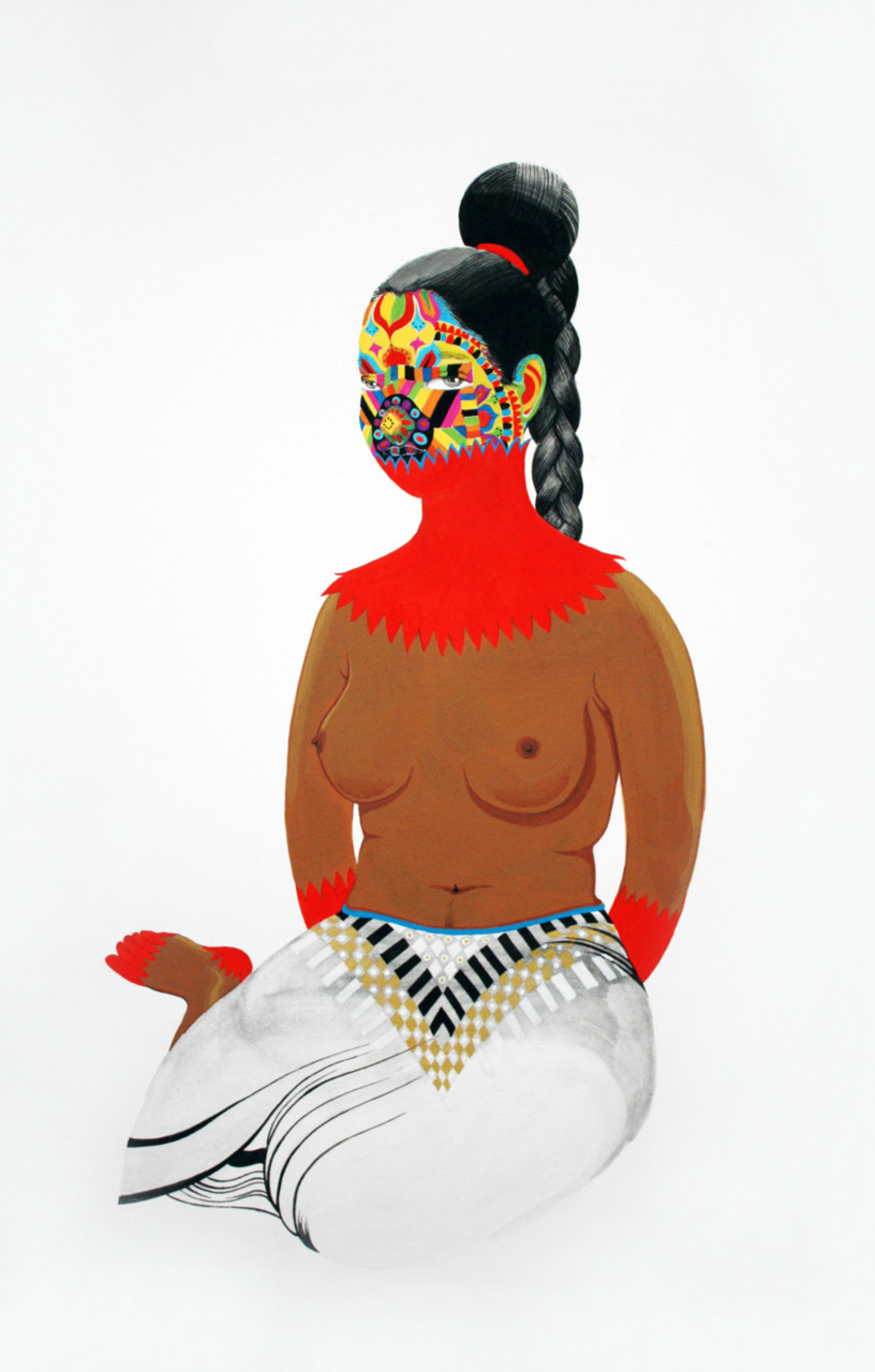


Just like the Russian doll in Matryoshka with Golden Panties, Rajni Perra’s paintings are all about the delight and dread of peeling back cross-culture layers of meaning. Her pop sensibilities, applied to traditional miniaturist style, work their way deep into the tangle of Eastern/Western culture and gender questions. While exploring heavy territory, there’s something undeniably weird and fun about Rajni’s work. Having recently been awarded the Drawing/Painting Medal for this year’s graduating class at OCADU, Rajni spoke with us about her latest series.
Q: Your work draws heavily on the imagery of traditional South-Asian art, yet seems to be playing with the modern influences eastern and western culture have had on each other. As a Sri-Lankan artist living and working in Toronto can you tell us about some of themes addressed in your paintings?
A: One thing that I like to address for sure is the intercourse of kitsch that goes on between Eastern and Western visual culture.
For instance, Bollywood is a response or re-appropriation of Hollywood to a certain degree, and then there are western parodies of it and so on.
Specifically what I like to discuss with the viewer is the visual treatment of the ethnic female body image. I’m not at all the first artist to talk about this in their work but I use a pop-ish, sort of subversive aesthetic to bring the issues of female ethno-sexuality in online or screen culture to light.
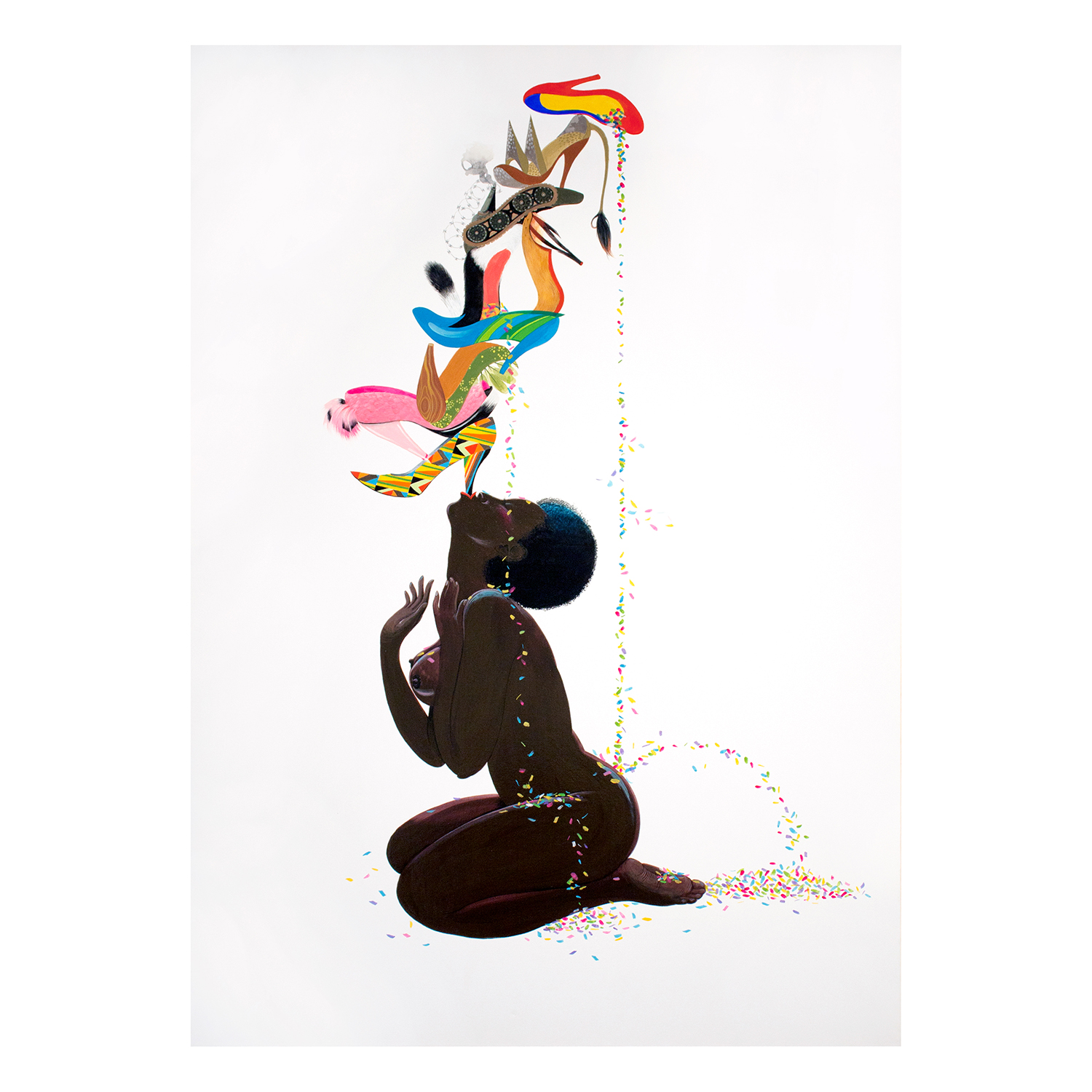
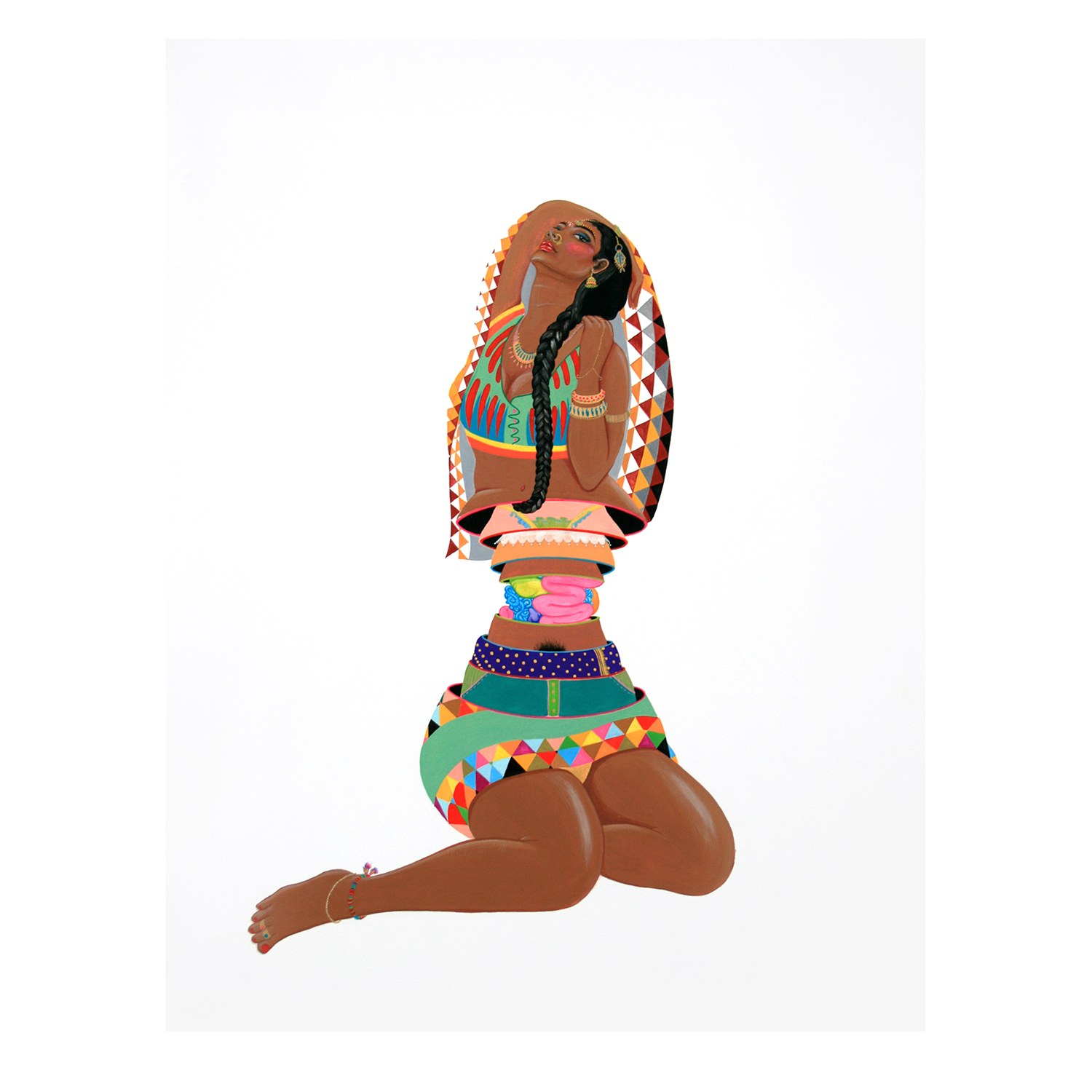
Q: Paintings like Chinnamasta and Matryoshka with Golden Panties examine representations of eastern women’s body image and sexual identity in both traditional and modern contexts. What are some of the ideas you’re exploring in these works?
A: Well, one thing I’ve had in mind for a while is the idea of the ethno-pornography site. Maybe this will help me to explain what I’m trying to do with my images.
We’ve all seen them- they’re these hyper-stereotypical web images of African girls in beads and wood, Japanese girls in kimonos, and Indian girls in saris; all very subservient, all very saleable; this is my point. There’s something for sale there.
I am trying to take that thing – the downward glance of the Caucasian male spectator – and turn it on its head. Or at least sideways.
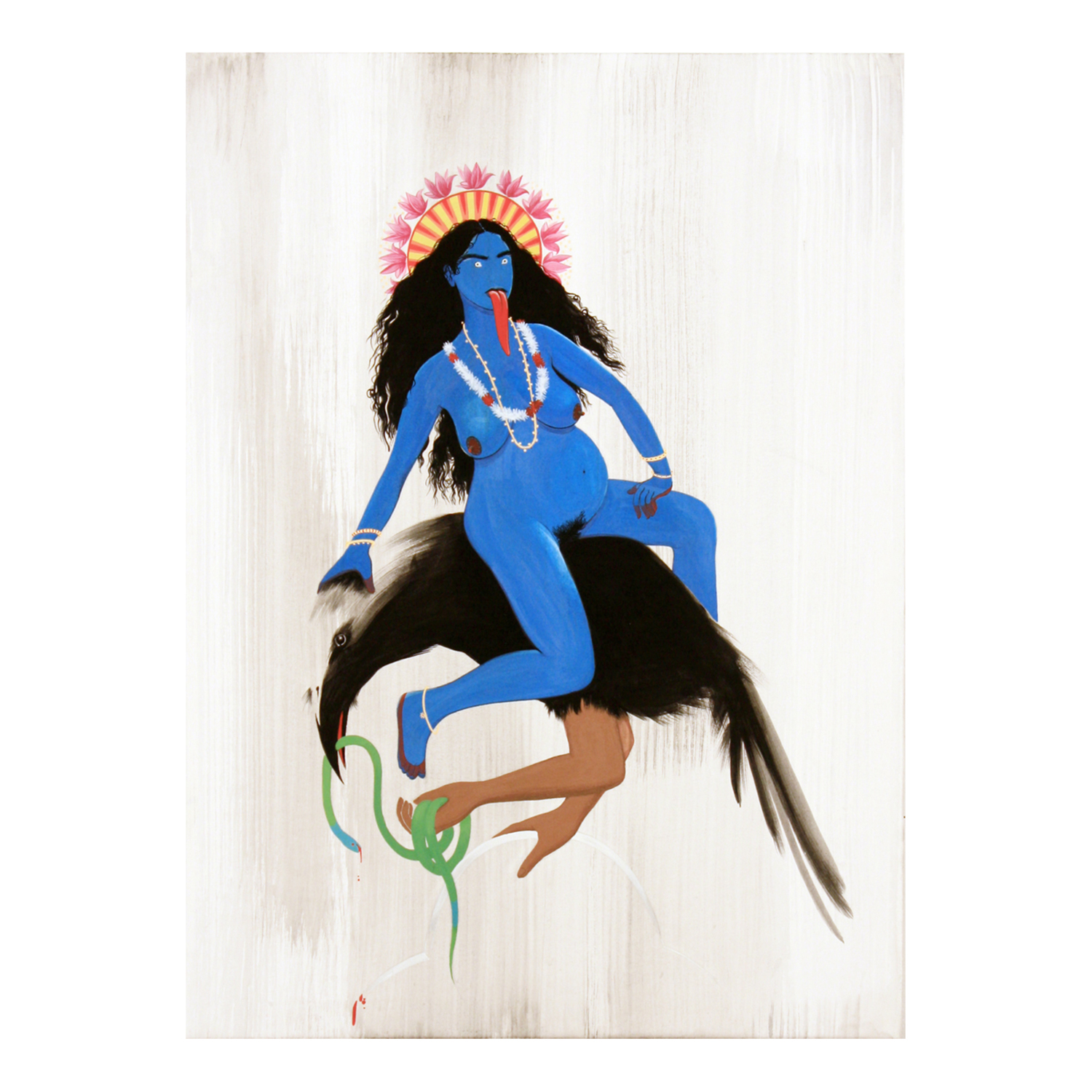
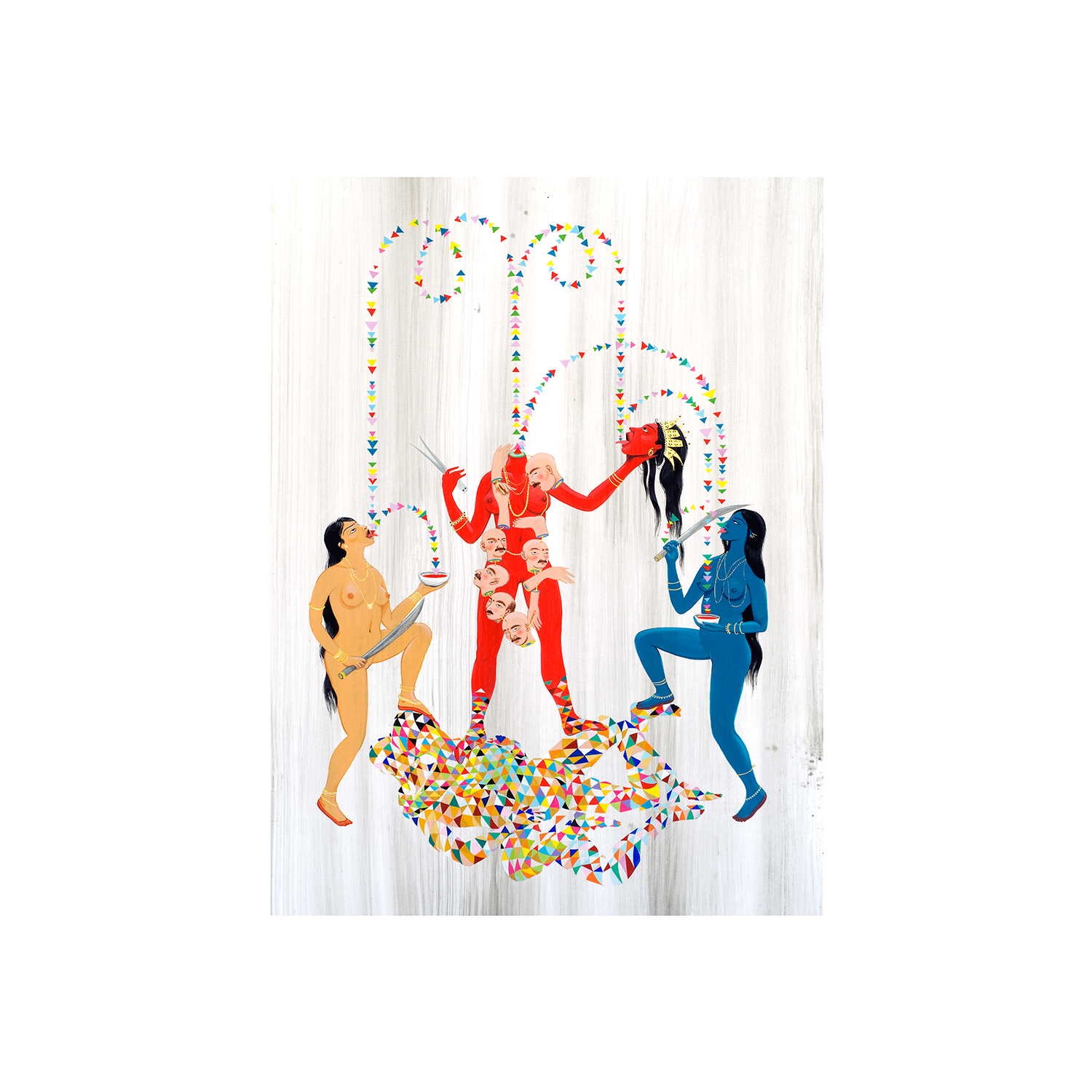
Q: The dinosaurs are a fun counterpoint to the religious iconography in your paintings. How did they find their way into your images?
A: I love dinosaurs. I don’t know. They’re just there and people really seem to like them, which makes me happy. People say they’re feministic, but I’m just having some fun and painting hot girls on these sort of phallic reptilian beasts.
I find they’re more about my love of style than anything else. This series is separate, it’s called The New Archeology. The others, concerning the East and idols, are called The New Ethnography.
Q: While your paintings reference eastern miniaturist style, can you tell us why they eschew the elaborate scenery leaving only figures on blank backgrounds?
A: My focus is on the treatment of the human body, as I explained before. Eschewing the background is also actually (or more so) an aesthetic decision. If I wanted to paint backgrounds I’d just be doing traditional miniaturism, I think.
Q: You recently graduated form the Ontario College of Art and Design. What (in the best of worlds) do you see yourself doing with your work in the coming months?
A: I’m continuing both series a little longer and then starting a new one. I have this one in the dino-series of an asian afro-lady riding two crocodiles. Im pretty excited about it. The new series will be in the same vein as The New Ethnography but will feature masks from my home country, which are pretty scary! And also things like food-sex and jewels and garlands of flowers.
Oh, and I plan to move around a lot more. But I do want to represent Toronto and show here and sell here. It’s my hood.
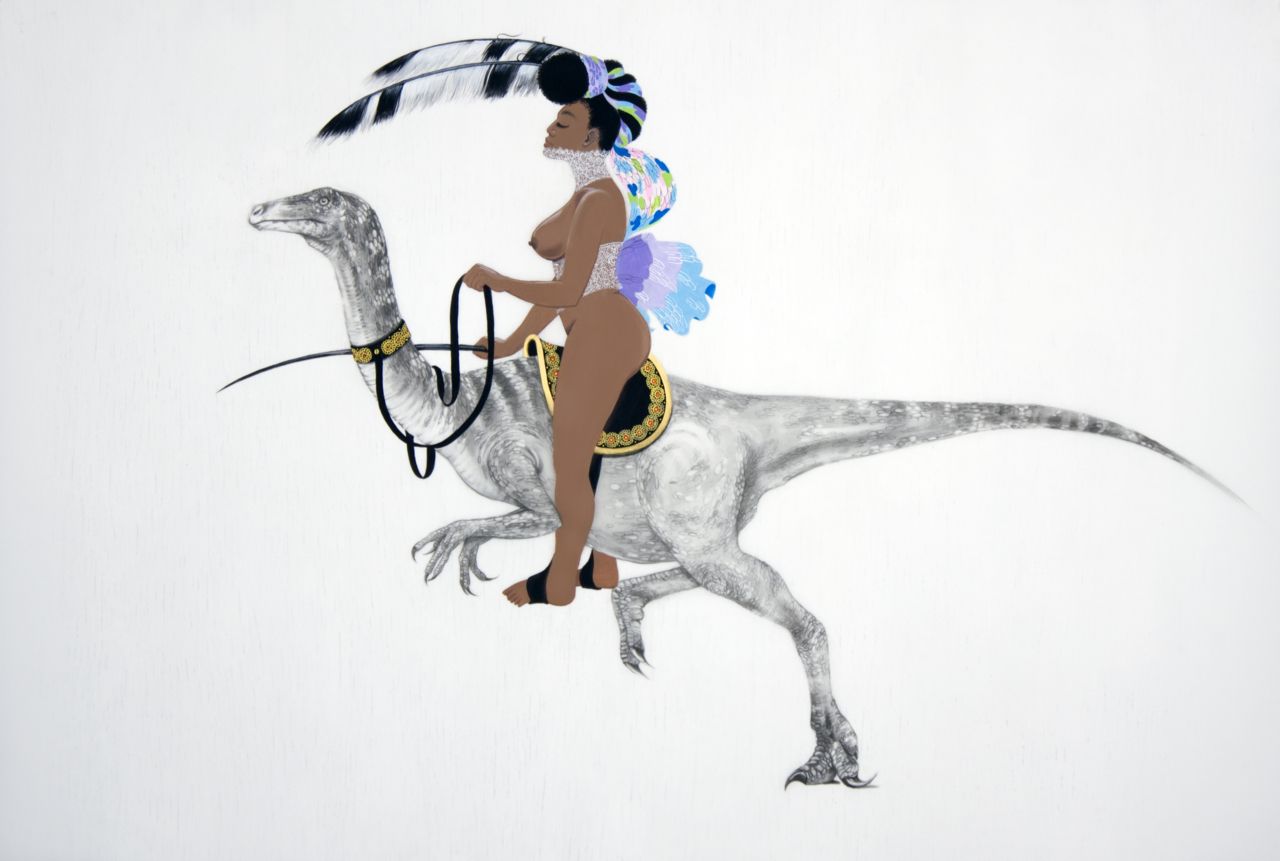
Photo by Eugen Sakhnenko